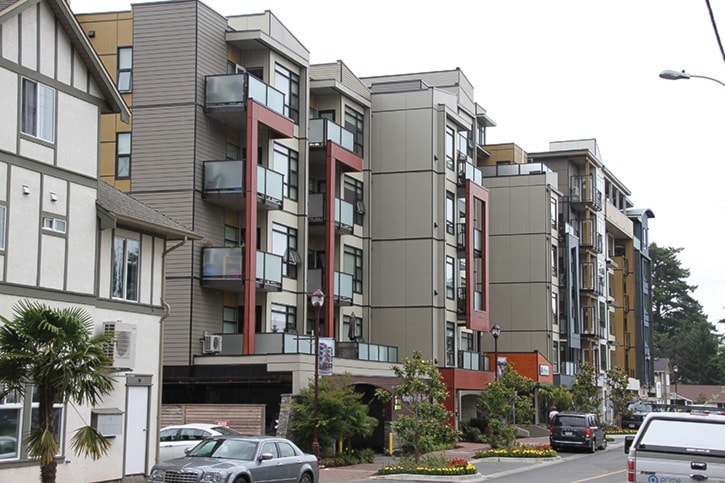Greater Victoria’s rental market continues to surge, with the region now checking in as the third-most expensive place in Canada in which to rent behind only Vancouver and Toronto, according to PadMapper, a national apartment search platform.
The West Shore hasn’t escaped this trend, says Claire Flewelling-Wyatt, managing broker with Pemberton Holmes, which manages many properties in the area.
Two-bedroom condominiums could typically be had for $1,250 to $1,350 a month a couple of years ago, she says, but those same suites are now going for between $1,450 and $1,600 depending on location.
Flewelling-Wyatt cites a couple of reasons for this increase. Firstly, many people are getting priced out of Victoria and are making their way out to Langford, specifically, as an alternative.
“Another thing is that Air BnB has become very, very popular, so a lot of the rental properties that used to be long-term tenancies in downtown Victoria … investors are buying them up and running them as Air BnBs rather than giving the product to the market as a long-term rental. So people are getting displaced,” she says.
A quick search of Air BnB properties in Greater Victoria revealed 306 units, the bulk of which were located downtown. These units range from a $24/night shared room in Cook Street Village to a $359 three-bedroom house in James Bay, but the bulk fall in the middle of that range.
“It’s a puddle effect, so it’s just pushing everything out to the edges,” Flewelling-Wyatt says.
Malcolm Hall, who owns dozens of rental units on the West Shore through his company Lifestyle Ventures, believes that a lot of the spike in demand comes from a lack of options in Victoria proper.
“It’s either new stuff in high-rises, which is very small and pricey, or it’s the old 1970s wood-frame apartments,” he says.
Flewelling-Wyatt has witnessed a “tremendous amount of frustration” among tenants, with many couples bringing in a friend to help them afford two-bedroom places that they used to be able to afford on their own.
“They’re starting to have to share accommodations in order to meet the rental rates that are out there,” she says.
That’s causing some problems, as three people in a property means more wear and tear on the unit, leaving landlords disappointed at the condition of the apartment when tenants move out.
Young families are increasingly renting apartments and townhomes because renting entire, detached homes has simply become unrealistic.
Vacancy rates on the West Shore are more or less in line with those in the rest of Victoria, which is to say there aren’t many vacancies at all. Pemberton has 2,000 units in Greater Victoria, but a search by Flewelling-Wyatt yielded just a single available unit on the West Shore.
Purpose-built rental buildings continue to spring up here, which has been helpful, but the market remains challenging.
“There’s just very little out there,” Flewelling-Wyatt says.
Prices tend to go up in jumps rather than with steady increases, Hall says, and that’s based on whether a market is oversupplied or undersupplied.
It doesn’t take much for a market to become oversupplied, with a five-per-cent vacancy rate seen as the threshold for it to enter that status. That typically means stabilization or even drops in rental prices, and that’s how Hall sees the market playing out eventually.
“It’ll go along … and then it’ll get oversupplied and then there will be a correction. Rents probably won’t back up very much, but they’ll stay stable for a while,” he predicts.
joel.tansey@goldstreamgazette.com
